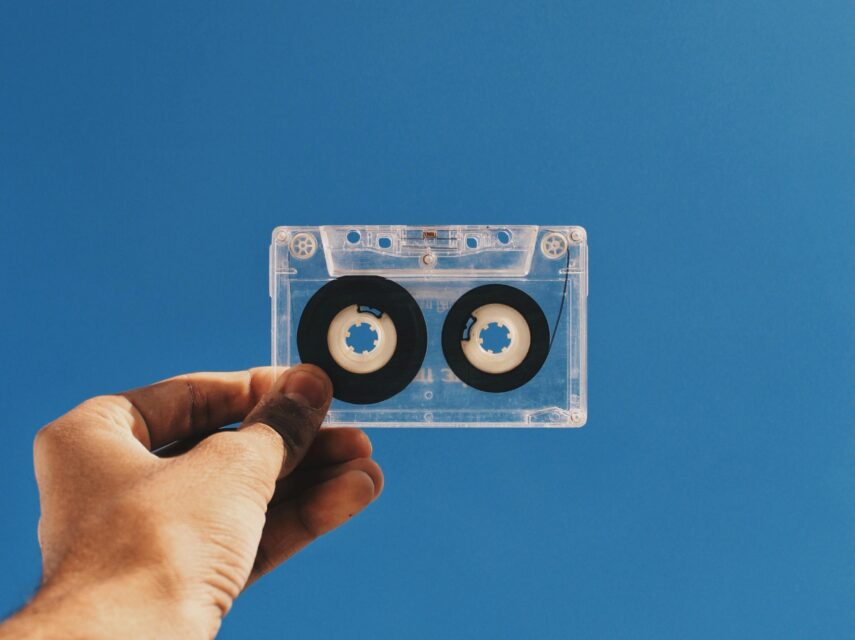May 20, 2025
by GForce Software
Com Truise has a unique approach to synthwave, blending nostalgic and futuristic elements with a distinctive production style. “Brokendate”, from his 2011 debut album Galactic Melt, showcases his use of heavily detuned synths, big gated drums, and intricate sequencing. For this article, the first in a new educational series, Reverb Machine put together a remake of Com Truise’s “Brokendate”. Below, they’ll show you how they recreated its synth sounds using OB-X, Minimonsta, and Oddity.
You can listen to the full remake here—no samples from the original were used: [LINK]
You can listen to the individual tracks:
Opening Plucks
“Brokendate” begins with a short, resonant pluck pattern. The plucks are sequenced to play every dotted eighth note, while the delay is synced to eighth notes. This means the delayed signal fills in the gaps between the notes, creating a rhythmic interplay. Because it’s a ping-pong delay, it also adds stereo movement. A lot of Com Truise’s songs use rhythmic delay in this way—some highlights are “Propagation” and “Iteration” from his 2017 album “Iteration”.

To create the pluck patch, start with two detuned sawtooth waves in OB-X. Detune the second oscillator by 0.16 semitones (16 cents), which will create a thick, chorus-like quality. To fine-tune the oscillators in small increments rather than full semitones, hold the CMD key on Mac or Shift key on Windows while adjusting the frequency knob.
For the filter, set the cutoff to 100 Hz, resonance to a high 62%, and modulation to 83%. The filter envelope has a quick 34 ms attack and a short 220 ms decay, giving the sound a soft, brassy quality.
To create the ping-pong delay in OB-X, set delay sync to “on” and delay mode to “crossover.” Set the left delay time to an eighth note, the right to a quarter note, and the HPF to 30% to remove excessive low-end. Feedback is set to 70%, with the delay amount at -17 dB. Here’s how the track changes with and without the delay:
Bass Sound
The bass in “Brokendate” plays 1/16th note plucks that are sequenced with short note lengths for a punchy sound. For my remake, I recreated the sound using Minimonsta, which is well suited for bass sounds. I used a triangle wave with two heavily detuned square waves. Oscillator 2 is set to +0.1 semitones (10 cents), and oscillator 3 is set to -0.13 semitones (-13 cents). The filter is set to 750 Hz with a short decay time.

Effects play a huge role in achieving this bass sound. I used an EQ with a deep midrange cut around 500 Hz and a 5 dB boost at 210 Hz to make some space and boost the low-end. There are also some modulation effects, which I recreated using Ableton’s Phaser-Flanger in flanger mode at 50% mix. This adds some movement as well as adding to that vintage ‘80s production sound. Finally, there’s heavy sidechain compression triggered by a 1/4 note trigger, which makes the first note of every beat duck by about 20 dB. Here’s the bass with and without effects:
Lead Synths
There are three lead sounds in “Brokendate”. The first is a long, sparse lead introduced at the same time as the drums. This sound has a long release and is heavily drenched in reverb, which helps it fill in the space between notes. I recreated it using OB-X, layering sawtooth and square waves with a slow LFO (0.88 Hz) adding slight pitch vibrato (20%) and pulse width modulation (60%). The onboard delay is set to 300 ms with high feedback, and the reverb’s size and decay are set just past noon, with the amount at 35%. Here’s what it sounds like:



The other two lead sounds enter just before the two-minute mark, when the plucks drop out. These play in tandem—one playing short phrases at the start of each four-bar section, while the other plays continuously. The first was recreated in Oddity using a filtered sawtooth and square wave, with oscillator 2 detuned to 0.124 semitones. The second was made in OB-X, using saw and square waves with subtle slow LFO pitch and PWM modulation and heavy reverb.
Putting It All Together
For the drums, I used a mix of LinnDrum samples for the kick and sounds from Com Truise’s Nvision Splice sample pack for the snare and toms. For the transition uplifter effect at 1:49, I had to get creative. I used a pretty standard noise Uplifter FX sample from a Vengeance sample pack and processed it with Ableton’s Auto Filter to closely match the original sound. I automated the filter to slowly open, set the resonance to 70% (almost in self-oscillation territory), and then used Auto Filter’s onboard LFO, set to a square wave with an amount of 13 and a fast rate of 1/48. This creates a rising effect while also quickly modulating the filter.
GForce OB-X, Minimonsta, and Oddity are great tools for capturing the vintage synth textures that define Com Truise’s music. By understanding his approach to sound design—heavy detuning, sharp plucks, rich delays, and big reverbs—you can bring similar retro-futuristic aesthetics into your own productions.
The Patches and Ableton Live Session
For copyright reasons, the Ableton Live session does not include MIDI or samples and is provided for Educational purposes only.
The Patches and Ableton Live session are available at: [LINK]
The Original Track
All credits for the original tracks go to Com Truise. You can find the track at:
All credits for the remake go to Reverb Machine. For Educational purposes only.
